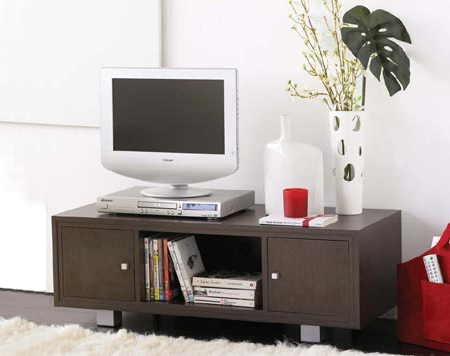How to make a TV stand
For a contemporary look without a designer price, this simple TV unit was constructed from PG Bison Wenge MelaWood.
HERE'S HOW:
1. Lay the inner top and base together, with the inside (best) faces together. Measure and mark 250mm and 266mm from both right and left ends, squaring the marks down the front edges (see Diagram 1).
2. Attach both divisions by drilling pilot holes then using three equally spaced screws. Ensure the top edges are flush and aligned with the pencil layout marks. Attach inner ends to the top and bottom with 50mm x 8g screws.
3. Set a combination square to 4mm. Drill a 5mm clearance hole through the inner bottom and screw-fix the outer from the inside with 28mm x 8g particleboard screws. Repeat for the outer top, maintaining a 4mm reveal (see Diagram 3).
4. Securely clamp the outer ends in position ensuring the front edge is flush with the edges of the top and bottom. Drill a 5mm clearance hole through the inner end and fasten with 28mm x 8g screws.
5. Screw-fix the back into position with 50mm x 8g particleboard screws. Drill a cable entry hole through the centre of the back using a 50mm hole saw.
DIY Tip:
Drill from both sides to avoid
chipping the opposite face.
6. Securely clamp the door to the bench with face (best) down. Measure 50mm from top and bottom edges and square across a line. Measure in 23mm and mark intersecting point. Drill a 35mm diameter hole to a depth of 12mm.
7. Use a small straightedge or a steel rule to align the full overlay hinges parallel with the edge of the door. Secure the hinges with 16mm x 6g screws.
8. The mounting plates are positioned 52mm from the inner top and bottom and 54mm in from the front edge of the inner end (see Diagram 2).
9. Remove the black plastic cover cap and position the feet on the underside of the cabinet 130mm in from the ends and 30mm from the front and back. Attach with 12mm x 10g pan head screws. Fix the door stops and handles in position.

